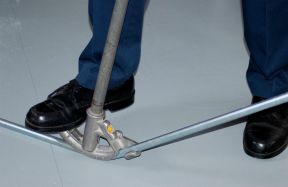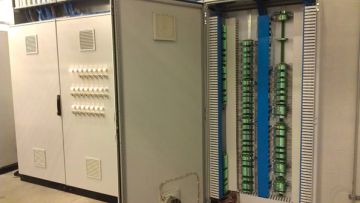
The National Electrical Code (NEC) distinguishes between classified and unclassified locations. Classified locations are potentially hazardous where there is electrical usage because the atmosphere contains or may due to mishap contain explosive gas, flammable liquid vapors, dust or flammable airborne material.
The NEC specifies electrical materials, devices and installation methods for these areas. The requirements differ depending upon the type of hazardous material and the likelihood of its being present in the air. For example, in some locations, electrical conductors must be installed in rigid metal conduit, as opposed to lighter-weight electrical metallic tubing.
Enclosures such as junction boxes and distribution panels have a heavy cast-metal construction with sections bolted together and gasketed.
Metal-clad cable (Type MC) and electrical metallic tubing (EMT) are widely used wiring methods found in all non-residential buildings except for the most restrictive settings. Neither is permitted by the NEC in Class I, Division 1 locations, where flammable liquids and explosive gases are present.
Where they are permitted, EMT is best in long exposed runs while MC is preferred for getting around close obstacles and for pushing through drilled holes in studs or fishing through hollow cavities. MC works well as short fixture whips and terminating at motors and other vibrating machinery where flexibility is desired.

MC is covered in NEC article 330 and EMT is covered in NEC article 358. Both articles contain sections titled Uses Permitted and Uses Not Permitted. Also, they contain information regarding how bends are to be made (for EMT) and minimum bending radii (for MC). The basic idea is that the effective inside diameter should not be materially reduced.
The metal raceway qualifies as an equipment-grounding conductor, but better electricians “pull a green for everything” and bond it to all enclosures along the way, even where not required. Type MC is manufactured with the conductors in place. A green conductor is included for equipment grounding, and various types such as 12-2 and 14-3 are available for standard use, switch loops, 240 V with neutral and three-way switch travelers. The outer armor should be cut using an MC cutter (trade name Roto-Split) so as to avoid nicking the conductor insulation.
Needless to say, measures undertaken to realize explosion-proof wiring can be costly. An explosion-proof portable power distribution unit with ten 20-A explosion-proof breakers and a 200-A explosion-proof main breaker sells for just over $24,000.
The NEC offers a far less costly alternative, although it is suitable only for low-power applications. It is known as an intrinsically safe electrical system. This type of equipment, when properly installed, makes it possible to feed limited amounts of electrical power into a hazardous area using conventional wiring methods and materials. Of course intrinsically safe power will not run a large electric motor or heater, but for instrumentation and some types of control wiring it is imminently suitable.
Intrinsically safe wiring must be designed and installed as a complete system if it is to function as intended and to be Code compliant. The system consists of intrinsically safe apparatus and circuits. An intrinsically safe circuit is defined as one that is not capable of causing ignition. This is a function both of the voltage and available current as well as the type of hazardous material in the classified location.

The NEC requires an intrinsically safe system be installed in accordance with its control drawing, which is supplied by the manufacturer of the intrinsically safe system. The control drawing is a master plan that covers the entire installation. It includes associated apparatus and field wiring. Details as to how it is to be drawn up are contained in a standard published by the Instrument Society of America.
As you may imagine, fail-safe measures must be employed to ensure higher-power electrical energy does not infiltrate the system from outside, and to this end there are specific NEC mandates that govern the installation. If these are not observed, we are looking at a fiery inferno down the road.
For one thing, intrinsically safe circuits must be separated from one another by at least a quarter inch. Moreover, with a few exceptions, intrinsically safe conductors and power conductors are not permitted to occupy the same raceway, cable or cable tray. Where not in cable or raceway, intrinsically safe and non-intrinsically safe conductors are to be at least two inches apart. There are also specific requirements regarding grounding and bonding, sealing of raceways and labeling.
For instrumentation inside a classified area, an intrinsically safe wiring system is the preferred way to go, but be sure to check the Code language to make sure you get it right.
Can I install my intrinsically safe fire alarm wiring circuits in open ended galvanised conduit in some areas to provide mechanical protection Thank you